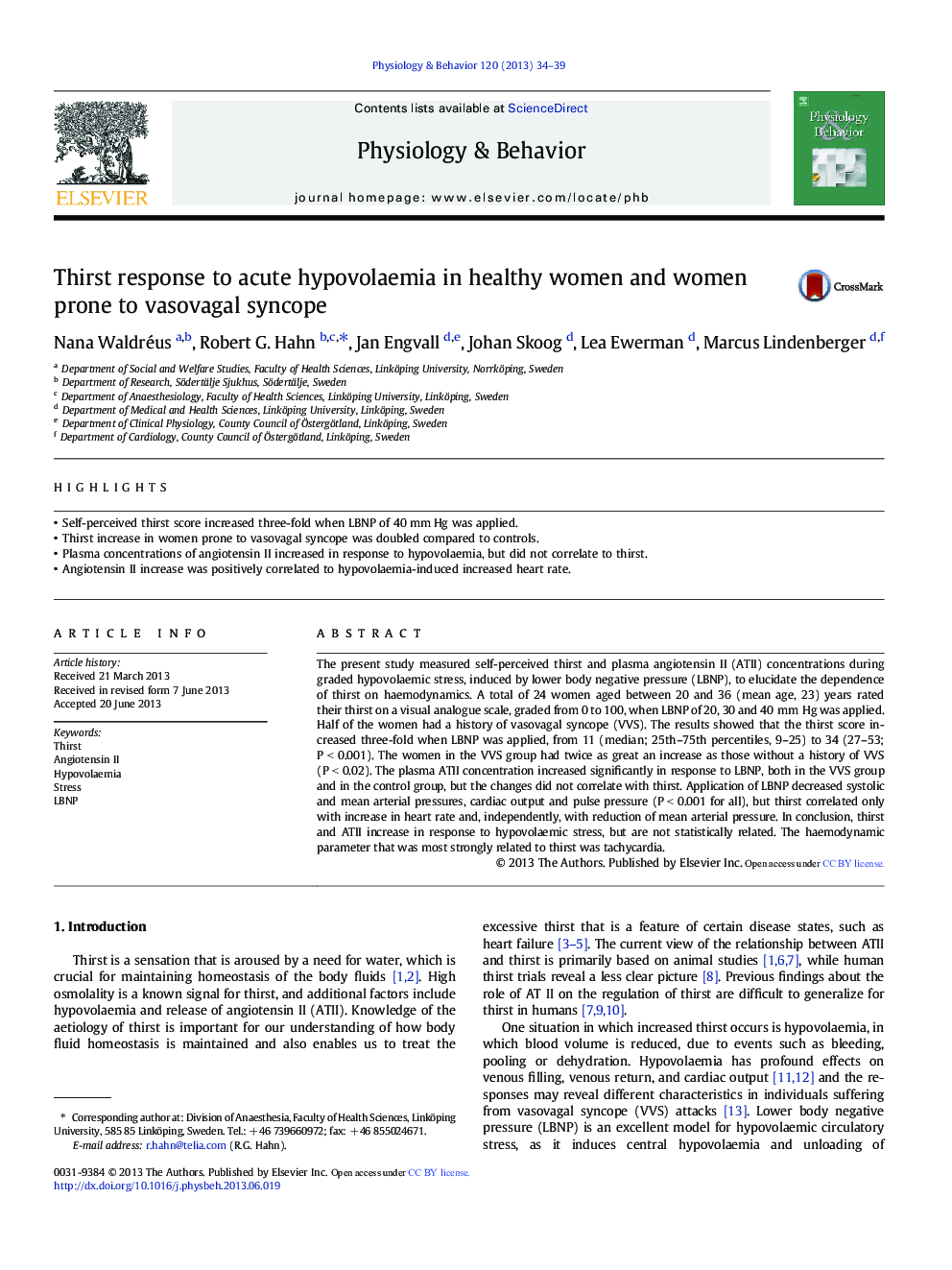| Article ID | Journal | Published Year | Pages | File Type |
|---|---|---|---|---|
| 5924617 | Physiology & Behavior | 2013 | 6 Pages |
â¢Self-perceived thirst score increased three-fold when LBNP of 40 mm Hg was applied.â¢Thirst increase in women prone to vasovagal syncope was doubled compared to controls.â¢Plasma concentrations of angiotensin II increased in response to hypovolaemia, but did not correlate to thirst.â¢Angiotensin II increase was positively correlated to hypovolaemia-induced increased heart rate.
The present study measured self-perceived thirst and plasma angiotensin II (ATII) concentrations during graded hypovolaemic stress, induced by lower body negative pressure (LBNP), to elucidate the dependence of thirst on haemodynamics. A total of 24 women aged between 20 and 36 (mean age, 23) years rated their thirst on a visual analogue scale, graded from 0 to 100, when LBNP of 20, 30 and 40 mm Hg was applied. Half of the women had a history of vasovagal syncope (VVS). The results showed that the thirst score increased three-fold when LBNP was applied, from 11 (median; 25th-75th percentiles, 9-25) to 34 (27-53; P < 0.001). The women in the VVS group had twice as great an increase as those without a history of VVS (P < 0.02). The plasma ATII concentration increased significantly in response to LBNP, both in the VVS group and in the control group, but the changes did not correlate with thirst. Application of LBNP decreased systolic and mean arterial pressures, cardiac output and pulse pressure (P < 0.001 for all), but thirst correlated only with increase in heart rate and, independently, with reduction of mean arterial pressure. In conclusion, thirst and ATII increase in response to hypovolaemic stress, but are not statistically related. The haemodynamic parameter that was most strongly related to thirst was tachycardia.
